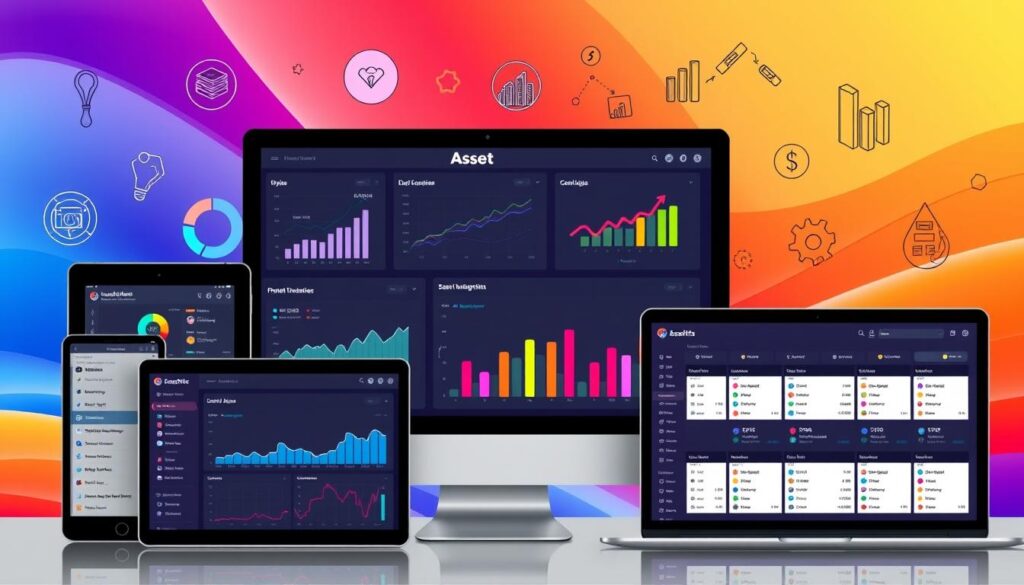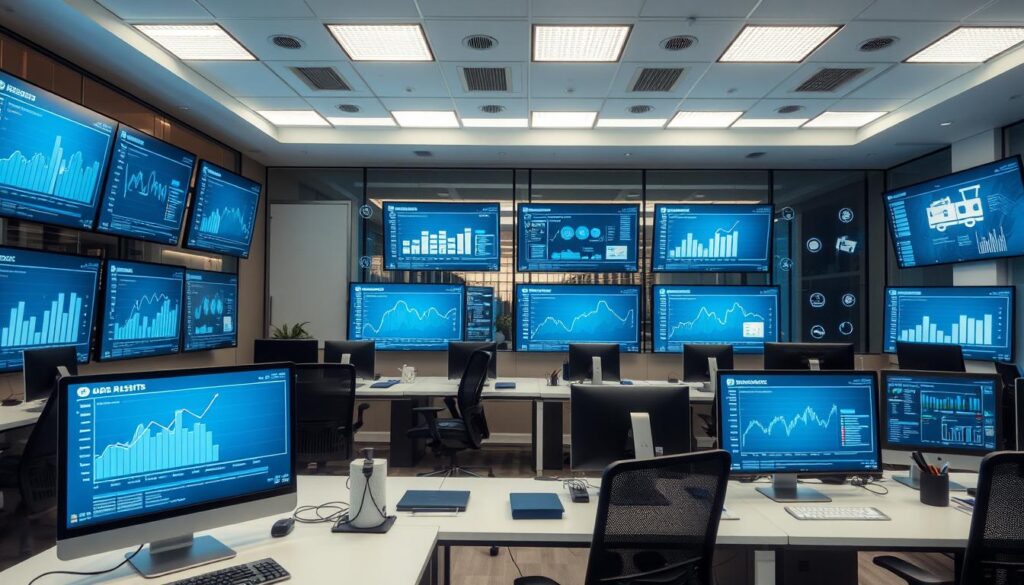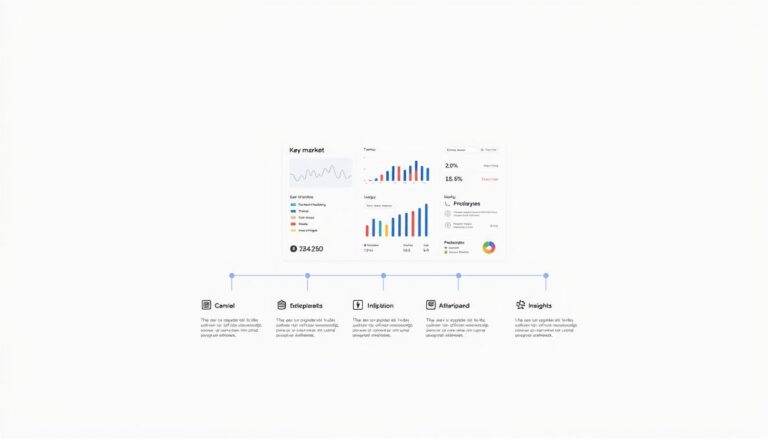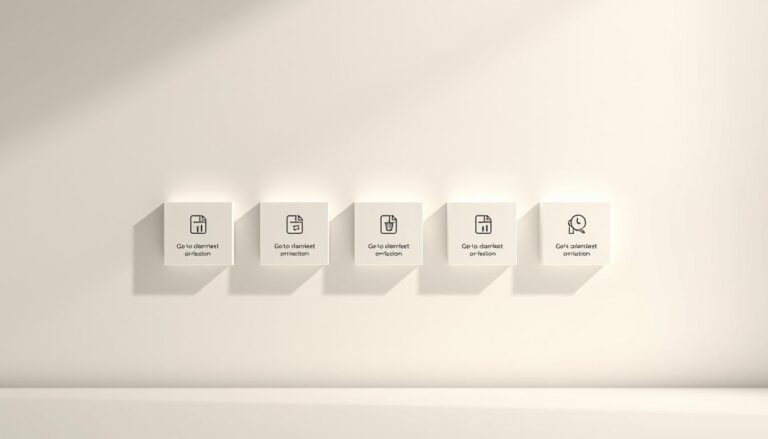For businesses aiming for top efficiency, custom software for asset management is vital. Glide Solutions crafts personalized asset management software to fit your unique business goals. This centralized asset management solution makes operations smooth. It boosts security and helps make better decisions. Glide is known for its success, trusted by over 100,000 companies. It also has more than 600 positive G2 reviews.
Custom asset management solutions from Glide are tailored for your needs. They offer mobile-responsive apps. These are made to integrate with your work process, improve financial management, and enhance your business strategy.
Key Takeaways
- Align asset management to your business needs with Glide’s custom software, ensuring efficiency and strategic oversight.
- Glide’s mobile-responsive solutions reflect deep integration with operational patterns, achieving high-user satisfaction.
- With a centralized asset management hub, individuals can access and manage assets rapidly and without hassle.
- Advanced security measures are ingrained in Glide’s software, providing peace of mind and safe operations.
- Backed by strong community approval, Glide Solutions is a preferred partner for agencies requiring precision asset management software.
Understanding Custom Software for Asset Management
In the modern business world, having bespoke asset management software is key. This software perfectly fits a company’s specific workflow. It is crucial for tracking and managing assets accurately.
Definition of Custom Software
Custom software for asset management is made to suit an organization’s particular needs. It’s different from ready-made solutions because tailored software for asset tracking integrates well with existing processes. This ensures more control and flexibility in managing assets.
Importance in Asset Management
Custom asset management tools are vital for improving efficiency and making assets more visible. Gartner says these solutions can cut software costs by up to 30% by optimizing license management. Also, according to Sage Accounting, using spreadsheets for tracking assets can lead to big financial losses. This is due to errors and misreported assets.
Key Features and Functions
Bespoke asset management software has essential features like real-time tracking, lifecycle management, and auto alerts. These platforms let companies tailor dashboards and reports to their goals. This gives insights for smarter decision-making. Asset Panda shows a huge 800% ROI from better asset management. This highlights the value of investing in strong asset management platforms.
By using custom asset management tools, firms can make their operations smoother and boost asset reliability and compliance. Recent findings stress that good asset management means full compliance and control. This helps avoid risks and follows industry and government rules.
Benefits of Custom Software Solutions
Custom software for asset management changes businesses everywhere. It creates a customizable asset management platform that fits a company’s exact needs. This goes beyond just making things run smoothly. It’s about having a system that’s made just for your business.
Enhanced Efficiency and Productivity
Custom asset management software makes things more efficient and productive. This is especially true in fields like logistics and healthcare. With real-time tracking, assets are always ready when needed. This keeps things moving without delays.
Improved Data Accuracy and Reporting
Getting asset management right is a must. Asset management software links with current systems for up-to-the-minute data. This cuts down on mistakes. It’s really helpful in manufacturing and healthcare, where correct data is super important.
Tailored Solutions for Unique Needs
Different industries have their own hurdles. A customizable asset management platform solves these industry-specific problems. Whether it’s monitoring machinery with IoT in manufacturing or following healthcare laws, these custom solutions help a lot.

Enhanced security measures, like setting different user roles, keep important info safe. This not only works well but also boosts security in companies.
The table below shows how custom asset management helps various industries:
| Feature | Benefits | Industries |
|---|---|---|
| Real-time Tracking | Ensures asset availability for smooth operations | Logistics, Healthcare, Manufacturing |
| Automated Alerts | Reduces asset failure risks, extends asset lifespan | Manufacturing, Retail |
| Custom Reporting | Provides detailed insights into asset performance | Various Industries |
| Integration with Systems | Streamlines operations, improves data accuracy | Manufacturing, Healthcare |
| User role Customization | Enhances security, protects sensitive information | Corporate Environments |
| Mobile Accessibility | Benefits field teams with flexibility in management | Maintenance, Sales |
Using these custom solutions, businesses not only meet their current needs but also prepare for future growth. This keeps them ahead in their industries.
Key Components of Asset Management Software
Today, it’s key to grasp the basics of asset management software. It helps organizations keep track of their stuff both you can touch and digital. This tool is a must-have to make operations better and help in making smart choices.
Asset Tracking and Monitoring
At its heart, asset management software has a custom asset tracking system. It uses cool tech like QR codes and barcodes. This tech gives quick info on assets, making sure they’re always seen.
This system stops assets from getting lost and makes managing inventory smooth. It tracks where assets are, how they’re used, and their lifespan stages in detail.
Maintenance Management
Maintenance management is crucial in asset management tools. It helps schedule service in advance and manage work orders well. This cuts downtime and makes assets last longer.
By guessing when things will need fixing and planning repairs early, companies cut maintenance costs. They also boost work flow and avoid stops in operation.
Financial Reporting Tools
Dealing with money and reporting is key in asset management software. It gives updates on asset use and meter readings in real-time. This is important for smart money choices.
The software keeps track of how assets lose value, maintenance costs, and return on investment. This is vital for planning budgets right and knowing an asset’s financial health.
The asset management software is a powerful tool for companies. It gives detailed reports that help with big decisions. By using strong asset management tools, businesses not only meet rules but also do better in today’s digital world.
Integrating Custom Software with Existing Systems
Businesses wanting to boost their efficiency should integrate custom software for asset management into their current systems. This is a key move for digital transformation. Combining new software with old systems improves performance and strengthens asset management.
Compatibility with Legacy Systems
When adding a new asset management solution, making sure it works with the old systems is crucial. Old data systems can be complex and different from each other. A strong integration plan is needed to keep data safe and operations smooth.
Data Migration Strategies
For successful software integration, planning data migration thoroughly is essential. It’s important to transfer all asset data accurately and keep a close watch on the process. This keeps operations running smoothly during the software switch.
Ongoing Support and Maintenance
An asset management solution needs ongoing support and updates to be effective. Regular software improvements and quick help desk support are necessary. These actions help the software stay useful and meet new business needs over time.
The table below shows how different companies benefit from using custom software. It shows their satisfaction and the available support:
| Company | Satisfaction Rating | Community of Experts |
|---|---|---|
| Glide Solutions | 4.7/5 (600+ G2 Reviews) | 4,500+ Experts |
| TRU Solutions | Top Industry Ratings | Extensive Support Network |

Customization Options for Diverse Industries
In various sectors, personalized asset management software and custom asset management tools can make a big difference. They help businesses meet their unique needs, improving how they work. These tools make sure decisions are based on solid data, leading to better results.
Industry-specific software solutions are designed for the unique needs of each sector. For those in real estate and property management, it’s crucial to have software that helps manage properties, leases, and maintenance easily.
Real Estate and Property Management
In real estate, custom software solutions help managers look after many properties with ease. They can track leases, set up maintenance reminders, and see how properties are doing in real-time. This helps them make more money and keeps tenants happy.
IT and Technology Asset Management
IT departments benefit greatly from personalized tools. These tools help keep track of hardware, software, and digital assets efficiently. They make sure everything is accounted for, up-to-date, and used to its fullest, keeping everything running smoothly.
Manufacturing and Production Industries
Manufacturing benefits a lot from custom asset management tools. These tools keep track of how equipment is used and when it needs maintenance. They can even predict when equipment might fail, reducing surprise downtime and keeping production flowing smoothly.
Integrating advanced tech like IoT and AI with these tools adds a smart layer to asset management. This mix not only makes managing assets more efficient but also helps in making forward-thinking decisions. This means assets are more reliable and last longer.
Choosing the Right Development Partner
When picking a partner for custom software in asset management, the choice is key. The right partner has tech skills and knows industry challenges well. This knowledge makes custom asset management solutions more effective.
Evaluating Development Experience
Evaluating a partner’s experience is vital. It shows if they can handle software’s intricate details. Look at their portfolio to see their successes and read what past clients say. This helps you trust their ability to deliver complex systems.
Importance of Industry Knowledge
Your partner should deeply understand your industry’s needs. With broad industry knowledge, they can create specific solutions. These solutions meet business goals and follow rules, improving work and productivity.
Assessing Support Services
Support after launch is as important as development. A partner offering full support keeps the software running well as your business grows. This long-term support is key for the software’s success.
Finding a partner who gets the tech needs and nuances of your industry is crucial. This understanding is vital for your custom software. It helps tackle now’s tasks and prepare for tomorrow’s challenges.
| Technological Proficiency | Industry Experience | Client Testimonies | Support Quality | |
|---|---|---|---|---|
| Partner A | High | High | Extensive | Excellent |
| Partner B | Medium | Low | Limited | Average |
| Partner C | Low | High | Limited | Below Average |
Cost Considerations for Custom Asset Management Software
When you think about custom asset management software, there are key costs to keep in mind. Knowing these costs up front helps you get the most from asset management systems. It helps keep your budget safe too.
Budgeting for Development and Implementation
How much custom software costs depends on how big and complex the project is. Small projects might need $25,000 to $50,000. Medium projects cost between $50,000 to $100,000. Big projects might need more than $100,000.
That’s why planning your budget carefully matters. It ensures your investment matches your business goals and what you can afford.
Long-term Savings and ROI
Looking beyond the initial cost, custom software can save you money over time. It makes operations smoother, lowers mistakes, and makes tracking assets easier. These improvements make a strong ROI.
The software can grow with your business too. That means it keeps being useful and valuable long-term.
Hidden Costs to Consider
There are hidden costs when owning custom software. You’ve got to think about maintenance, updates, training, and possible downtimes. Knowing these costs early helps you budget better and understand the total investment.
| Project Scope | Cost Range | Typical Features Included |
|---|---|---|
| Small | $25,000 – $50,000 | Basic asset tracking and reporting |
| Medium | $50,000 – $100,000 | Moderate customization, integration capabilities |
| Large | $100,000+ | Extensive features, high complexity, advanced analytics |
Smart financial planning and understanding all costs are key to affordable asset solutions. By carefully looking at these costs, companies can make a smart investment. This investment should fit their budget and boost their growth and efficiency.
Future Trends in Asset Management Software
Looking into the future of asset management, new technologies play a big role. Innovations drive the trends in asset management software. They help businesses keep up with changes. The focus is on smarter, more elegant solutions. Leaders in the industry use new strategies. These include AI, better operational analytics, and moving systems to the cloud.
The Impact of AI and Automation
AI in asset management is changing how organizations handle things. It’s used in maintenance, analytics, and learning to predict needs. Blockchain adds tight security, which is key in sensitive areas. AI also helps manage energy use and reduce carbon footprints. This meets regulatory needs and supports the environment.
Enhanced Analytics and Reporting
Nowadays, having advanced analytics and reporting is crucial. Gathering data in real time through IoT is key for maintenance and avoiding downtime. This data sharpens the accuracy of asset conditions. It also helps turn data into useful intelligence. With tough laws, making clear, correct reports is a must.
The Rise of Cloud-Based Solutions
Cloud-based asset solutions are changing the industry. They give businesses flexible platforms that are accessible worldwide. This allows for monitoring and managing assets remotely. Also, the cloud helps integrate systems like ERP and CRM smoothly. The mix of cloud, AI, and analytics is setting new asset management standards. It enables higher efficiency and control over assets.



